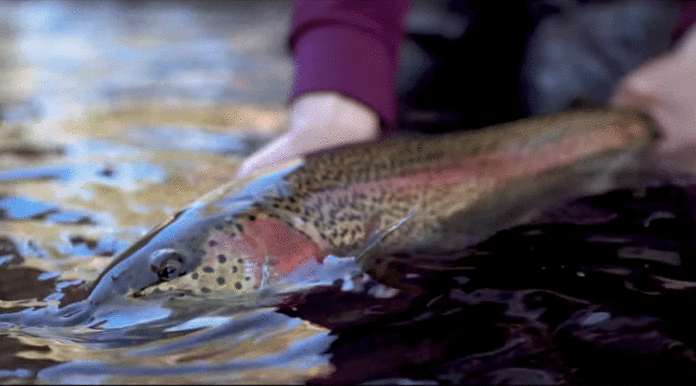Written by: Evan Jones
Photo courtesy Trouts Fly Fishing
Whether you enjoy throwing size 20 flies or not, there are certain situations where your success will likely depend on them. Low-water conditions, winter weather, tailwaters, heavy fishing pressure and/or a local predominance of smaller insects can all contribute to trout insisting on smaller food. While most fly patterns can be downsized to a certain extent, getting all the way down to sizes 20 and smaller isn’t always feasible due to design, materials, or realism constraints. In other words, it’s not simply a matter of shrinking your favorite fly patterns down, but also selecting patterns that lend themselves well to very small hooks. Ideally, a size 20 fly has a simple design that still maintains a distinct “buggy” profile, and is durable enough to withstand repeated grabs with forceps. Here are five of my favorites:

No list of size 20 flies would be complete without the workhorse known as the Zebra Midge. This fly catches fish everywhere from roaring freestones to meandering spring creeks to placid lakes. Don’t be put off by the simplistic design, even the most educated fish fall for this streamlined fly with regularity. Try experimenting with different color threads to jazz this one up a bit.

A staple of Colorado tailwaters, the RS2 is a solid choice for imitating tiny mayflies in fisheries across the globe. It can be fished as a dry on the surface, or as a nymph down below, with equal efficacy, even down into sizes 20 and smaller. The CDC wing traps air bubbles to add to the realism of an emerging insect. Try replacing the microfibbets in the tail with individual strands of crystal flash to make this fly stand out a bit more.

Popularized on the San Juan River–whose unofficial motto is “Big River, Small Flies, Huge Crowds”–the WD-40 can still fool fish that have seen everything twice. As adept as trout can be at identifying and avoiding artificial flies, somehow they never quite learn to stay away from this one.

When a tiny midge or mayfly hatch is on, an equally-tiny size 20 Disco Midge can be invaluable. Use it as a trailing nymph on the bottom, or as a dropper behind a small dry fly, and let it swing toward the bank at the end of every cast. Try using different color thread wraps underneath the crystal flash to produce different hues, and coat with epoxy to boost durability.

As one of the most successful commercial fly designers in the world, it’s safe to say that John Barr knows a thing or two about trout. He designed the Barr Emerger specifically to be tied small and fished in technical waters to picky fish. I’ve had many days on western tailwaters where this particular fly pattern in size 20 dramatically outfished others. You can try omitting the bead, but it’s quite difficult to improve on this one otherwise.
Evan Jones is the new assistant blog editor. He lives in Colorado, where minuscule flies are required.
Credit: Source link































